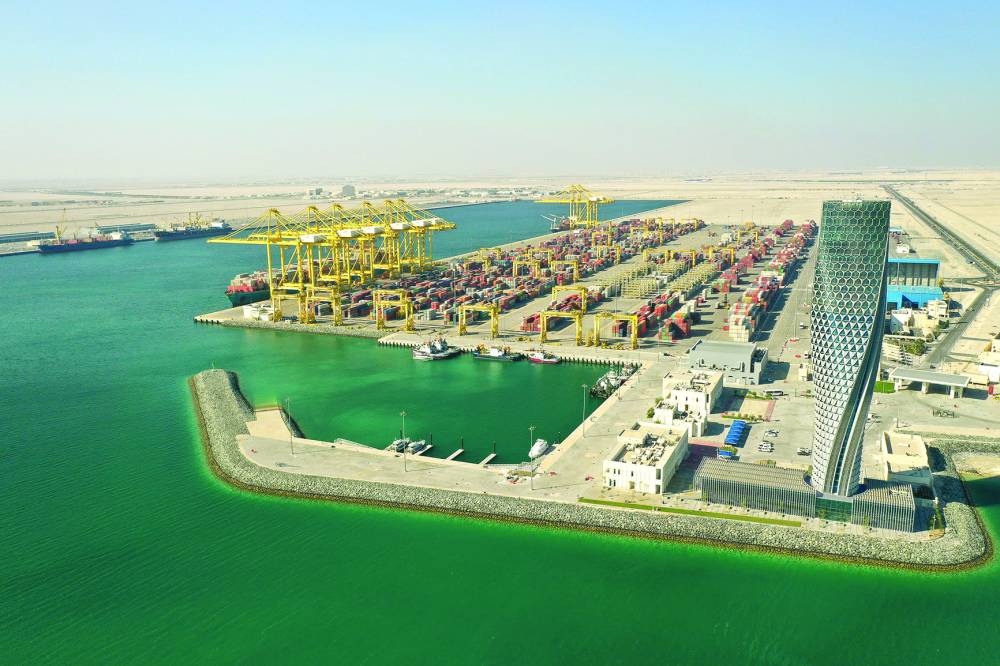Business
Qatar’s ports record brisk growth in containers and bulk cargo in October
November 03, 2024 | 08:06 PM


Containers, bulk cargo and RORO (vehicles) through Qatar's ports saw a brisk year-on-year growth in October 2024, indicating the country's growing trade and economic ties with the rest of the world, according to the official data.The number of ships calling on Hamad, Doha and Al Ruwais ports stood at 259 in October 2024, which saw a 4.02% increase on a monthly basis but down 1.52% year-on-year, according to the figures released by Mwani Qatar.Hamad Port, whose strategic geographical location offers opportunities to create cargo movement towards the upper Gulf, supporting countries such as Kuwait and Iraq and south towards Oman, saw as many as 149 vessels call (excluding military) in the review period. A total of 2,304 ships had called on the three ports during the first 10 months of this year."We’ve hit all-time highs in total F/T (freight tonnes) and units handled for our RORO operations at Hamad Port," QTerminals had said in its social media handle X.The general and bulk cargo handled amounted to 151,663 freight tonnes through the three ports, which surged 94.77% year-on-year but fell 6.17% month-on-month in October 2024.Hamad Port – whose multi-use terminal is designed to serve the supply chains for the RORO, grains and livestock – handled 268,477 freight tonnes of cargoes of which break-bulk was 91,056 freight tonnes and bulk was 45,022 freight tonnes this October. A total of 1.43mn freight tonnes of general and bulk cargoes were handled by the three ports during January-October 2024.The container handling through the three ports stood at 131,608 twenty-foot equivalent units or TEUs, which saw 10.18% and 5.43% growth year-on-year and month-on-month respectively in October this year.The container terminals have been designed to address the increasing trade volume, enhance ease of doing business and support economic diversification, which is one of the most vital goals of the Qatar National Vision 2030. With a stacking area of 176,000sq m, the container terminal 2 or CT2 is equipped with the latest advanced technology, including remote-operated ship-to-shore cranes, hybrid rubber-tyred gantries, and electric tractors.Hamad Port, which recently celebrated a huge milestone of exceeding 10mn TEUs since beginning operations in 2016, has rapidly evolved into a critical hub for international shipping, catering to the needs of all major global shipping lines.Hamad Port, which is the largest eco-friendly project in the region and internationally recognised as one of the largest green ports in the world, saw 130,627 TEUs this October. The container volume at the three ports totalled 1.23mn TEUs during January-October 2024.The three ports handled as many as 16,187 RORO in October 2024, which registered a 149.26% and 56.65% surge on annualised and monthly basis respectively. Hamad Port alone handled 16,145 units this October. A total of 105,483 RORO units were handled by three ports during January-October 2024.RORO ships – which are designed to transport vehicles like cars, trucks, and motorcycles – feature ramps that allow vehicles to drive directly on and off, eliminating the need for cranes and making it an efficient way to move cargo across the seas.Qatar's automobile sector has been witnessing stronger sales, especially in heavy equipment, private motorcycles and private vehicles, according to the latest data of the National Planning Council.The three ports were seen handling 40,661 livestock in October 2024, which shrank 3.09% year-on-year but shot up 43.42% on a monthly basis. As many as 471,581 livestock heads were handled by three ports during the first 10 months of this year.The three ports had reported no traffic of building materials this October. As much as 264,719 tonnes of building materials have been so far handled by Hamad, Doha and Al Ruwais ports.
November 03, 2024 | 08:06 PM
